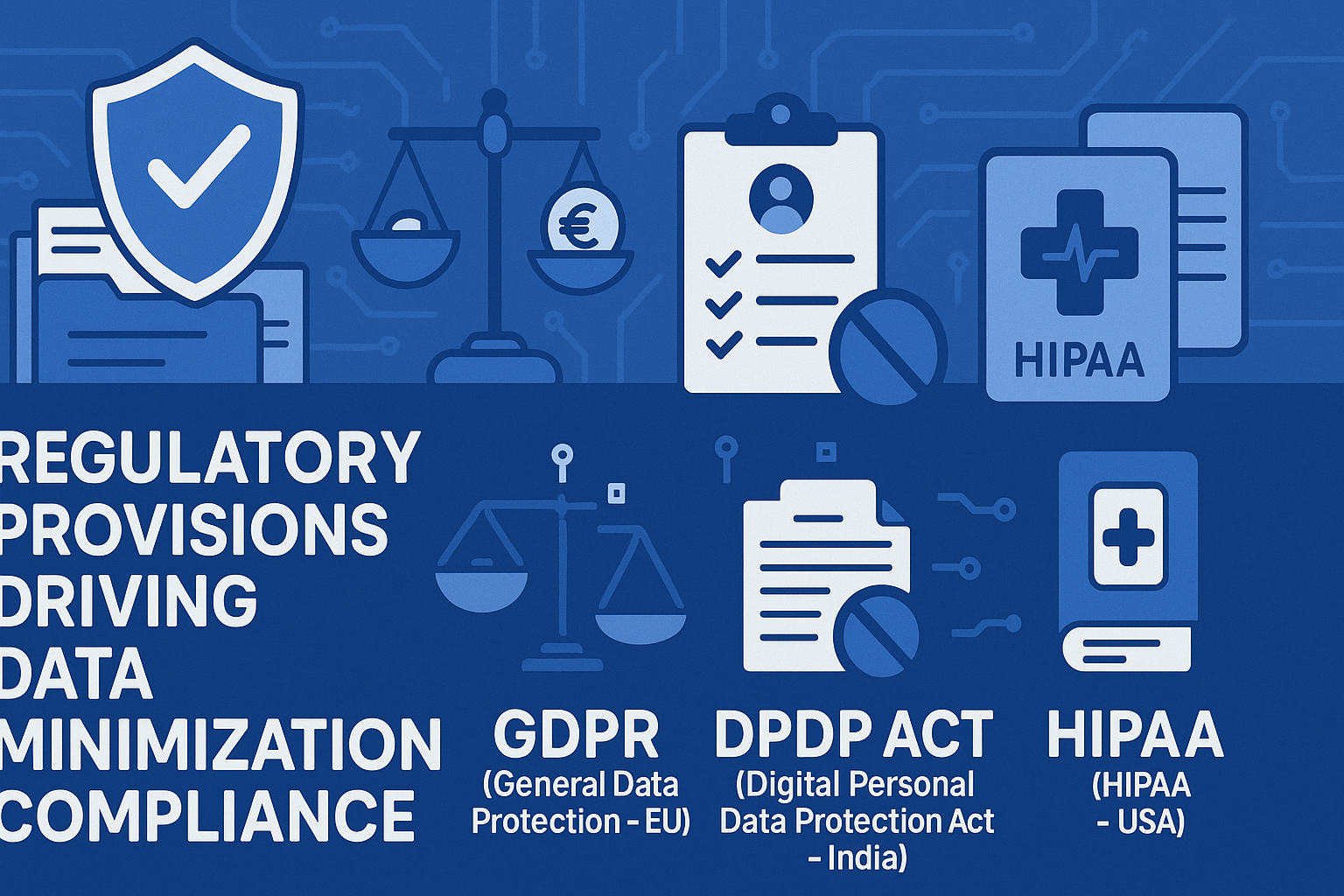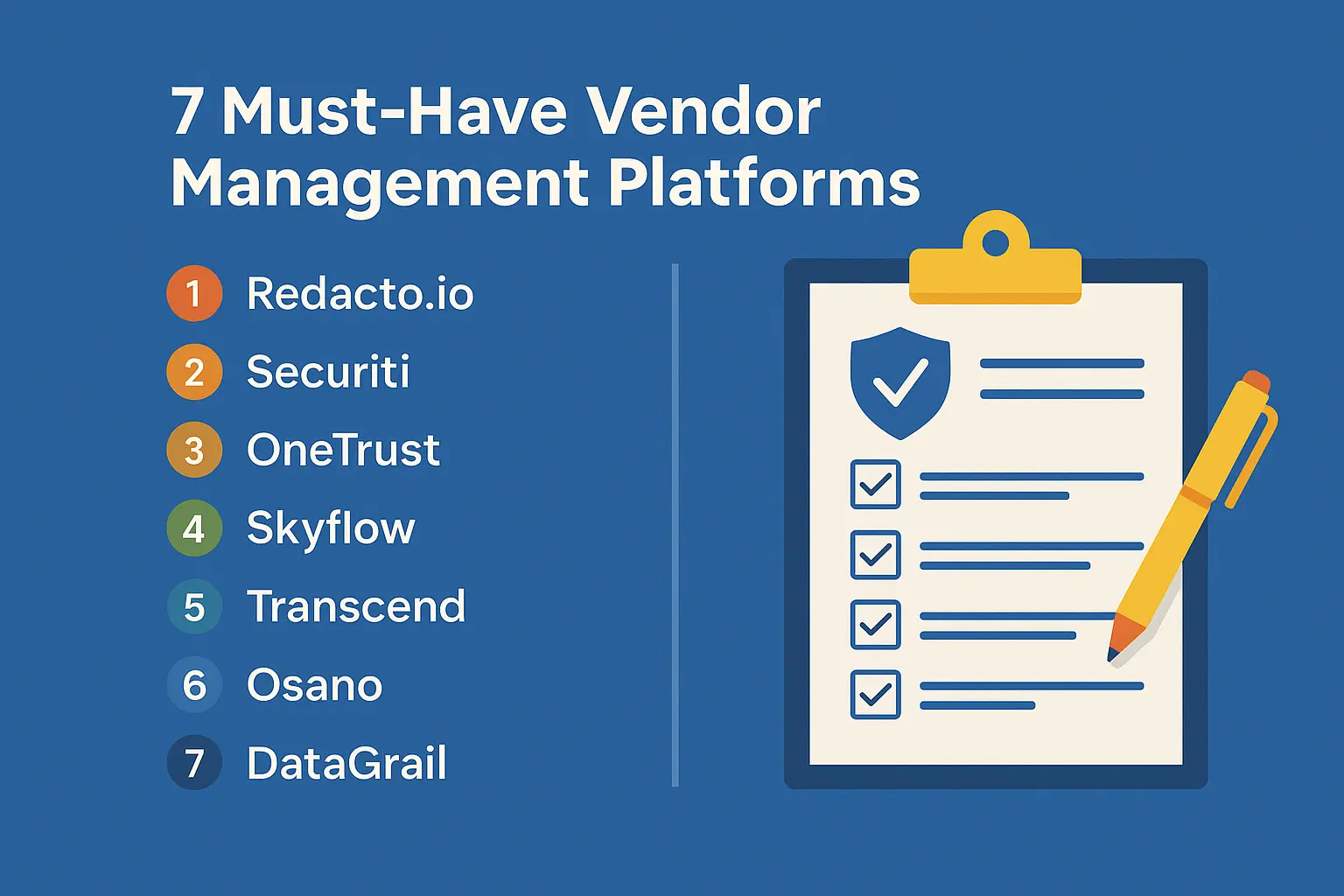
What is Data Minimization? Meaning & Benefits
Are you concerned about the amount of personal data businesses hold? Data breaches are becoming more common, putting both companies and individuals at risk.
Information that is not used can create major complications when it gets the wrong hands. That is why there is an imperative need to improve data practices.
This is where data minimization comes in as a significant solution. It aims at gathering only the minimum information that is required, minimizing risks and establishing trust within the framework of rigorous legislation, such as GDPR.
This guide explains its meaning and how it safeguards privacy. Businesses can also make the work easier with tools from Redacto.
What is Data Minimization? Understanding Its Meaning
Data minimisation meaning is straightforward—it’s about collecting and keeping only the data you truly need for a specific purpose. If a business only requires your email to send a confirmation, they shouldn’t ask for unrelated details.
The idea is not only a better practice but a necessity with stringent privacy laws such as GDPR in Europe. These laws obligate the companies to adhere to a principle of data minimization to prevent severe fines and personal data leakage or misuse. Having understood what data minimisation means, you must understand that it is a proactive approach that helps both business and consumers to work safely with less risk of noncompliance with the legal requirements.
Core Principles of Data Minimization
There is a core set of concepts that govern how companies manage personal information in the context of data minimization." These values can aid in data protection and the possibility of complying with strict guidelines i.e. GDPR and DPDP Act in India. Let us break them down in simple words.
Purpose Limitation
Maintain data related to your goal. In the case that you are operating a shop, your customer does not require you having a full background of the customer but only payment details of the customer. This approach to data minimization reduces the risk and is compliant with laws such as the DPDP Act in appropriately handling data, safeguarding all parties concerned against future problems.
Data Relevance
Maintain data related to your goal. In the case that you are operating a shop, your customer does not require you having a full background of the customer but only payment details of the customer. This approach to data minimization reduces the risk and is compliant with laws such as the DPDP Act in appropriately handling data, safeguarding all parties concerned against future problems.
Storage Limits
You should not retain data longer than you need it. After completing a task, such as when one has completed an order, delete personal information securely. This data minimisation step reduces the risk of leaks and complies with regulations under GDPR and CCPA, shielding you and your customers against future risks to their data.
Accountability
Demonstrate that you are obeying the rules of data minimisation by recording the data items you have acquired and the purpose of collecting them. This demonstrates that you are serious with privacy such as under HIPAA and DPDP Act. It creates confidence towards customers and can assist within audits or legal examinations, demonstrating that you are up to date in compliance.
Why Does Data Minimization Matter for Your Business?
Data minimization reduces the risk of data leaks. The less data you hold, the less there is to lose if a hacker breaks in. That’s a major advantage when breaches can cost millions and harm reputations.
Managing and storage of massive data involve resources in terms of servers, security and time by employees. The costs are reduced by adhering to the minimization of data, considering only essential steps. Besides, it demonstrates to the customer that you respect their privacy.
Data minimisation should not be overlooked. Consider British Airways- in 2019 they received a GDPR breach penalty of 222.89 million in part due to storing much more data than required. Regulations such as GDPR, CCPA in California, and more can provide large fines unless you restrict the amount of data collected. Therefore, this practice is crucial to prevent legal problems.
Regulatory Provisions Driving Data Minimization Compliance

Several global privacy laws make data minimization a must for businesses handling personal info. These regulations set strict rules to protect data and avoid misuse. Here’s a look at key laws pushing this practice:
- GDPR (General Data Protection Regulation - EU): This European law demands data minimization by limiting data collection to what’s necessary for a specific purpose. Non-compliance can lead to fines up to €20 million or 4% of global revenue, making it critical for businesses worldwide.
- DPDP Act (Digital Personal Data Protection Act - India): India’s DPDP Act requires companies to collect only essential data and justify its use. It aims to safeguard personal info, with penalties for violations, pushing businesses to adopt data minimisation as a core practice.
- CCPA (California Consumer Privacy Act - USA): CCPA in California enforces data minimization by giving consumers rights over their data, like requesting deletion. Businesses must limit data retention, facing fines for non-compliance, which encourages reducing unnecessary data storage.
- HIPAA (Health Insurance Portability and Accountability Act - USA): Focused on healthcare, HIPAA mandates "data minimization" for patient info, allowing only what’s needed for treatment or billing. Violations can bring heavy fines, so healthcare providers must strictly limit data collection and sharing.
How Data Minimization Helps with Third-Party Risk Management
Working with third parties—like vendors, suppliers, or software providers often means sharing data, such as customer info or payment details. But here’s the problem: if you share too much, you increase the danger. A single gap in their security can lead to a breach, exposing your business to risks and upset clients.
This is a critical concern because data leaks through third parties can result in massive fines under laws like GDPR and India’s DPDP Act. Beyond that, it can damage your reputation if clients learn their info wasn’t secure with your partners. Limiting what you share is vital to keeping those risks under control.
That’s where data minimisation proves so valuable. By sticking to data minimization principles, you only share what’s absolutely needed with vendors. For instance, if a shipping company needs an address to deliver a package, don’t provide full customer profiles with emails or phone numbers. This reduces the chance of a breach and keeps you compliant with tough regulations like CCPA and HIPAA.
Conclusion
Data minimisation is an effective method of reducing the amount of data collected, reducing risks, and ensuring close adherence to stringent laws such as GDPR and DPDP Act of India. Two-factor authentication saves businesses money and greater customer confidence, and it saves customers their data security too. Want to make data minimisation easy and stay compliant with GDPR or CCPA? Request a demo of Redacto today to see how our tools protect your data!
FAQs
What is data minimization and why does it matter?
Data minimization means collecting only the data you need for a specific task. It matters because it cuts risks of breaches, saves costs, and keeps you compliant with laws like GDPR.
How does data minimisation help with privacy compliance?
Data minimisation ensures you don’t over-collect personal info, aligning with laws like DPDP Act and GDPR. This reduces legal risks and builds trust by protecting customer data from misuse.
What are the main principles of data minimization?
Key principles of data minimization include limiting data to a clear purpose, keeping only relevant info, deleting data when done, and showing accountability under laws like CCPA.
Why is data minimisation important for third-party risks?
Data minimisation limits what you share with vendors, reducing breach risks. Under GDPR and DPDP Act, sharing less data with third parties helps avoid fines and protects reputation.
How can businesses start practicing data minimization?
Businesses can start data minimization by mapping collected data, setting storage limits, anonymizing info, and training staff on laws like HIPAA. Tools can simplify staying compliant with regulations.




%20Redacto%20logo_New.png)
.jpg)



.jpg)
.png)

